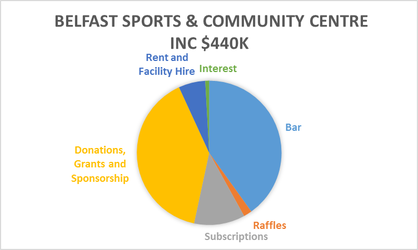http://www.stuff.co.nz/national/90430465/increasing-number-of-charities-creating-duplication-donor-fatigue
http://www.stuff.co.nz/the-press/opinion/90937970/editorial-ever-expanding-charity-sector-needs-a-vigilant-eye
They pose some interesting questions that I have looked at over the past few years: notably about duplication. Nicola Woodward from Aviva I think summed this up well:
"There's also a lot of duplication and competition that isn't helpful for the people charities are here to support. The fact that we're charities doesn't make us entitled to funding – or that it should be assumed that we're doing great work."
Charities needed to be transparent and accountable and had a responsibility to work together to provide the best possible services "as effectively and efficiently as possible", Woodward said.
The editorial poses some great questions, ones I have been pondering about for a while now and boring my friends and family, but puts a lot of the onus onto DIA.
It would be helpful if in the name of transparency, Charities Services could find a way to rate charities on what proportion of their income goes to front line services and how much to admin.
Now, this is a sterling idea – although only really shows a small piece of the puzzle. At the moment, this material often exists (and where it doesn’t it sure should), but no one really looks at it, except those with a passion here. Through this blog, I have looked at various charities: yep there are some great ones, but ones where the community benefit is clearly questionable. Others look at charities via the letters to the editor channel. However, it’s a hobby (and a fairly weird one at that). There is no current business model to open up the sector for scrutiny, either for an individual charity’s effectiveness, nor benchmarking across sector. There are also some big questions which remain unanswered around the role of local and central government in funding things which are more and more falling to private philanthropists or community grantmakers.
However, I am not convinced it should be the role of the DIA to do this sort of thing given the breadth of activities they do, but rather it would be rather fabulous if DIA can help facilitate this amongst independent researchers.
The Doing Good Better book by William MacAskill (sent to me for free thanks to the Effective Altruism people thank you very much), provides some good rating points, which he is turn has borrowed off GiveWell. To steal theirs:
- What does the charity do?
- How cost effective is each programme area?
- How robust is the evidence behind the programme?
- How well is each programme implemented?
- Does the charity need additional funds?
Now, I am not proposing that these measures are appropriate for our NZ charities. Indeed, the cost of such deep dives into our 27k charities, not to mention the over 25k incorporated societies which also ask for and receive community and individual funding, would be rather over the top for the return. However, I think it’s not too hard to scratch the surface on some of these big questions. The onus should be on the charities to show to the community that they do what they say they do, that their programmes are effective, that they are learning organisations and play nicely with others. It will help us make sure that those who get funding actually are worthy of our money.
Us randomly scattered cynical but community minded people could work with the regulator and develop a model. It could have the potential to put more sunlight on the NFP sectors and help us pay the rent. I think NZ Inc would certainly be better off, grant makers would have the opportunity to reduce their costs, individuals could have more confidence in where their money goes, and we might see some positive changes within the charitable sector.
Would love to talk with you if you think this is vaguely interesting.

 RSS Feed
RSS Feed